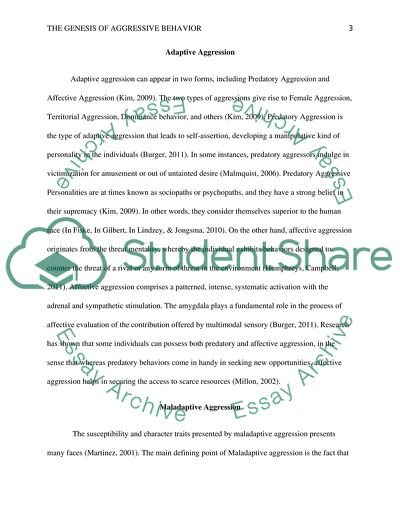Cite this document
(Aggressive Behavior in Human Beings Essay Example | Topics and Well Written Essays - 1250 words, n.d.)
Aggressive Behavior in Human Beings Essay Example | Topics and Well Written Essays - 1250 words. https://studentshare.org/psychology/1835595-agression
Aggressive Behavior in Human Beings Essay Example | Topics and Well Written Essays - 1250 words. https://studentshare.org/psychology/1835595-agression
(Aggressive Behavior in Human Beings Essay Example | Topics and Well Written Essays - 1250 Words)
Aggressive Behavior in Human Beings Essay Example | Topics and Well Written Essays - 1250 Words. https://studentshare.org/psychology/1835595-agression.
Aggressive Behavior in Human Beings Essay Example | Topics and Well Written Essays - 1250 Words. https://studentshare.org/psychology/1835595-agression.
“Aggressive Behavior in Human Beings Essay Example | Topics and Well Written Essays - 1250 Words”. https://studentshare.org/psychology/1835595-agression.


